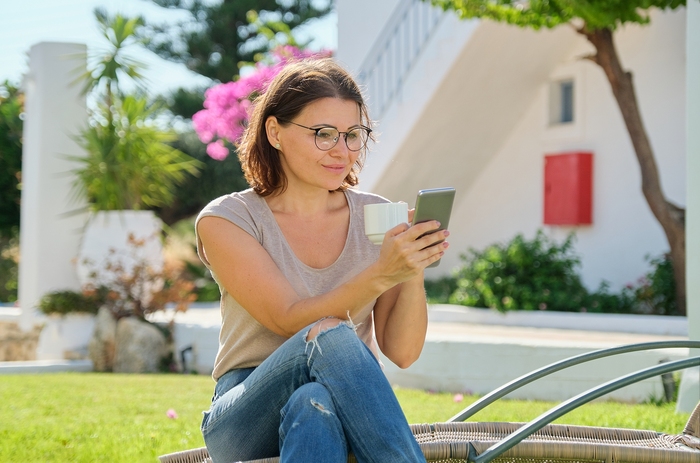Every week since March, my phone has shocked me by showing me my screen time. I can spend upwards of nine hours on my phone when I am home all day. And, while I know that is nothing to be ashamed of in these trying times, it does alarm me.
As a recovering addict, any kind of compulsive behavior frightens me. These behaviors are always reminiscent of my drug addiction. And I don’t need to be told that smartphone use can become an addiction. I find myself reaching for my phone moments after having put it down, while in the middle of something else. I’m even on my phone when watching TV.

Unfortunately, knowing this is not enough. As all recovering addicts know, you don’t stop unhealthy behaviors simply because you know they’re unhealthy. You need strategies.
If you’re not quite convinced that smartphone use can become an addiction, here is what you need to know.
Why you should put down your phone
The reason smartphone use can become so problematic is that we use it as a coping mechanism. The moment difficult thoughts come to mind, we pick up our phones and distract ourselves. The less time we are able to go without reaching for our phones, the more dependent we are.
Living as a healthy, non-addicted human being means spending time alone with yourself. If you are unable to do that, you are bound to use a substance or a substitute. Many people start using substances in the first place because they cannot manage time with their own thoughts and feelings.
If you’ve been through rehab, you hopefully have a grasp on what is healthy and unhealthy for you. Part of beating smartphone addiction is simply following the strategies you have already learned.
However, there are some particular strategies you can use to put your phone down.
Airplane mode
Airplane mode was created so that our phones don’t disrupt planes mid-flight. But they serve another strategy as well. Putting your phone on airplane mode means no calls, messages, or notifications come through. Make airplane mode your friend.
I’m not saying your phone should be on airplane mode all the time. However, when you are busy with something, use it so as not to get distracted. Activate it when you are with friends or having conversations with your partner. Activate it when you are trying to be productive.
Do Not Disturb is a good alternative. With this setting on, your phone receives messages but does not notify you. If you’re uneasy about your phone being unreachable completely, this is a good option for you.
Stick to one screen
Screen time is not necessarily unhealthy. You can spend time watching TV, for example, that is enjoyable and worthwhile. However, this time becomes unhealthy if you are scrolling through your phone throughout.
Looking at your phone while watching TV ensures that you are hardly present. It means you are distracted from processing what is going on on either screen.
A good rule of thumb is to limit yourself to one screen at a time. If you are using your laptop, don’t pick up your phone. If you are using your phone, don’t watch TV. And so on.
Externalize activities
One of the problems with “putting your phone down” is that so much of what we do is on our phones. I have used my phone to read for the past ten years. This is not in itself unhealthy, but it means I can all-too-easily get distracted if I have not turned on airplane mode. I can easily swipe the Kindle app away and do something else the moment reading gets a little bit tiring.
There’s no way I’m going back to physical books. They are expensive and consume a lot of space. They also take a lot longer to arrive from Amazon. A Kindle or other electronic book reader is a good alternative.
The more activities you externalize from your phone, the better. It is very convenient to have everything in one handy rectangle. But if you are trying to beat your smartphone dependence, some inconvenience is welcome.




